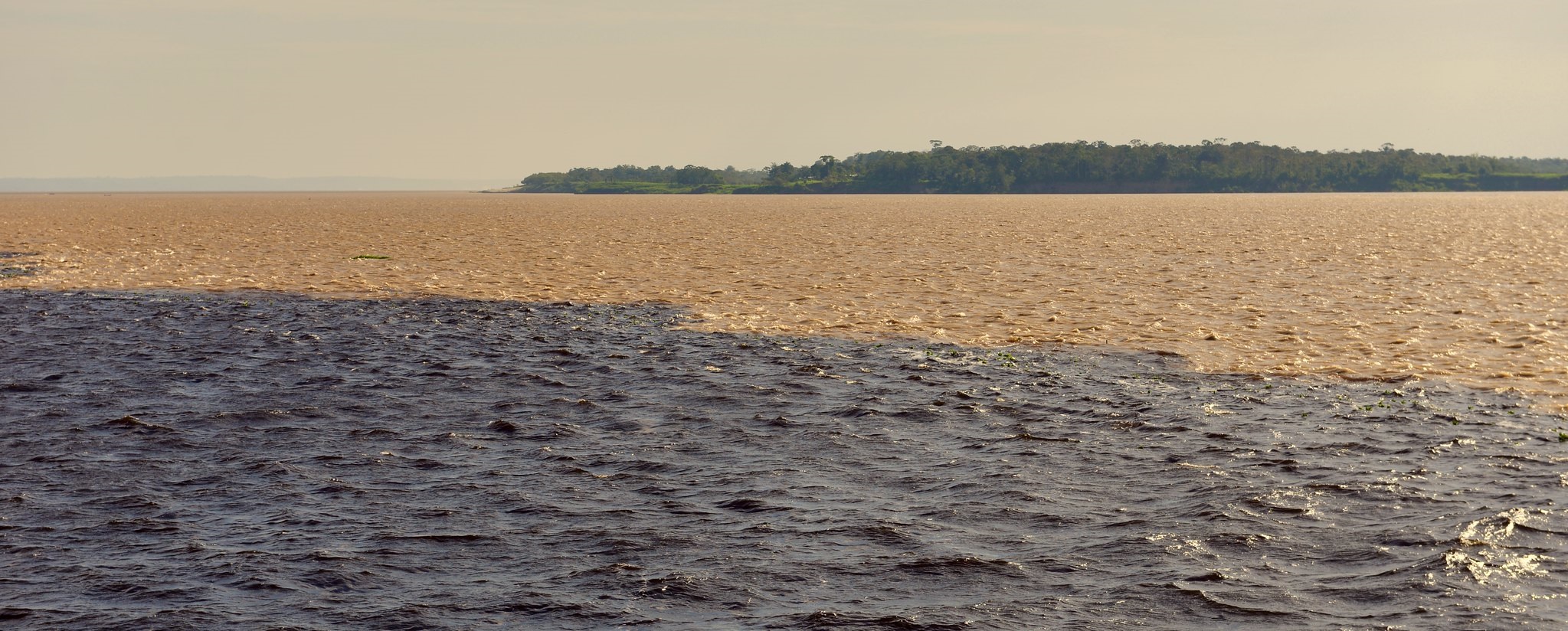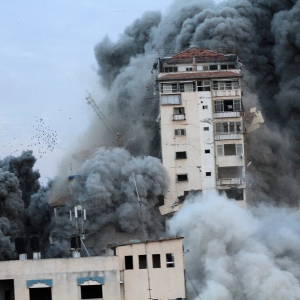The Stream, October 18, 2023: Amazon River at Lowest Level in More Than a Century

The confluence of the Rio Negro and Amazon River, near Manaus, Brazil. Photo courtesy of Flickr/Creative Commons user Sherpas 428 under CC BY 2.0 Deed license
YOUR GLOBAL RUNDOWN
- As Brazil’s drought continues, the Amazon River has fallen to its lowest level since records began in 1902.
- UNESCO has approved a $5 billion dam downstream from Victoria Falls for both Zambia and Zimbabwe.
- Along Kenya’s Lake Victoria shores, flooding attributed to climate change has contributed to water-related disease and destroyed villages.
- Melting glaciers have been a boon for Peruvian farming communities in need of water now — but insecurities in the long-term are a major concern.
In Gaza, an ongoing shortage of water supplies, cut off by Israeli forces, have reached a breaking point.
“We need to truck fuel into Gaza now. Fuel is the only way for people to have safe drinking water. If not, people will start dying of severe dehydration … Water is now the last remaining lifeline.” — United Nations statement.
Prior to the latest escalation of violence between Israel and Palestine, daily water consumption in Gaza was less than the World Health Organization’s recommendation, Reuters reports. It was just 83.1 liters per capita, compared to WHO’s recommended 100 liters.
Today, severe water shortages have become “a matter of life and death,” and in a majority of schools, “clean water has actually run out,” according to the UN.
Gaza has few options for receiving potable water. Their only natural source is the Coastal Aquifer Basin, which is polluted and unreplenished. More than 96 percent “of household water from the aquifer is undrinkable,” according to Reuters.
Gaza’s three major desalination plants have had their power cut off by Israeli authorities, leaving residents to drink saltwater or dig wells where groundwater is polluted with sewage. Over the weekend, a deal brokered between U.S. President Joe Biden and Israeli Prime Minister Benjamin Netanyahu was said to have renewed a supply of water from Israel to Palestine’s Gaza Strip. But according to Hamas, this has not taken place.
Gaza still needs fuel, currently withheld by Israel, to restart and re-power desalination plants.
— Christian Thorsberg, Interim Stream Editor
Recent WaterNews from Circle of Blue
- The $58 Trillion Value of Water: A Conversation with Stuart Orr of WWF — New WWF report estimates the economic value of freshwater ecosystems.
- Water Migrants: Rising Death Toll in the Mediterranean — Circle of Blue Graphic Journalism
The Lead
The Negro and Amazon rivers meet in Brazil’s port of Manaus, a city of 2 million people located in the country’s northwest region. At this spot the Amazon’s water level is now the lowest ever recorded, Reuters reports.
“We have gone three months without rain here in our community,” Pedro Mendonca, a rainforest villager, told Reuters. “It is much hotter than past droughts.” In some areas of the Amazon, communities are experiencing their worst drought in more than 40 years.
The state of Amazonas’ civil defense agency has said that 481,000 people — those who rely on the river for transportation, resources, fishing, and “access to food and medicine” — have been affected so far by the drought, attributed in the region to the El Niño climate pattern. The effects of such weather are expected to last until at least December, according to state scientists.
Water shortages have additionally strained water quality. Two weeks ago, the deaths of more than 100 river dolphins in the Amazon were attributed to drought and hot water. As the lack of precipitation persists, children are falling ill with diarrhea, fevers, and vomiting.
This Week’s Top Water Stories, Told In Numbers
12
The number of villages in Kenya near the shores of Lake Victoria that were submerged after an unexpected surge of water flooded the lake’s banks, destroying communities and leaving many children orphaned, in 2019, Mongabay reports. Experts have attributed the flooding to climate change, unpredictable amounts of rainfall, and a “lack of vegetation to control runoff.” In the years since the flooding, makeshift communities have become a breeding ground for diseases related to poor water and sanitation. Many children have been forced to become the heads of their families. Meanwhile, experts warn that unprecedented flooding will persist as a climate-related crisis into the future.
51
Percent of Peru’s glaciers lost to climate change over the past 50 years, the country’s National Water Authority reports. This high-altitude melting, however, has created immediate opportunities for valley farming communities. They have been using the melt to grow water-intensive crops including strawberries and sugar-snap peas, The Guardian reports. Hotter temperatures and drought across Peru’s Cordillera Blanca region had put agricultural livelihoods at risk — if not for glacial melt and the freshwater reservoirs the phenomenon created, agribusiness would have been unsustainable. But when the communities look up into the Andes peaks, they see little snow. And by the year 2111, Peru’s Ministry of Agriculture and Irrigation predicts, the last snow could disappear. When that happens, residents are unsure where their water will come from.
On the Radar
UNESCO has granted permission for a $5 billion hydroelectric dam to be built downstream from Victoria Falls, a UNESCO World Heritage Site and where Zambia and Zimbabwe are separated by the Zambezi River, Business Insider reports.
The countries had been pushing for the dam’s approval as a way to make money and limit domestic power outages, though they remain apart on issues such as construction cost.
Environmental activists have been pushing back on the project, saying that the complex will harm the waterfall and river health, but UNESCO was satisfied with the proposed dam’s design. According to Business Insider, “the project is built as a run-of-river project, which means there would be little water storage behind the turbines, limiting the impact on Victoria Falls.”
More Water News
Marimo: The population of marimo, “popular pet water plants” and filamentous algae found only in the world’s coldest lakes, is decreasing on a global scale, researchers at Kobe University have found, Science Daily reports.
Massacre River: The river, which forms the natural border between the Dominican Republic and Haiti and is an important channel for trade and commerce, has been shut down since September as the two countries continue to spar politically over usage, construction, and treaty rights, U.S. News and World Report reports.
Christian Thorsberg is an environmental writer from Chicago. He is passionate about climate and cultural phenomena that often appear slow or invisible, and he examines these themes in his journalism, poetry, and fiction.







Leave a Reply
Want to join the discussion?Feel free to contribute!